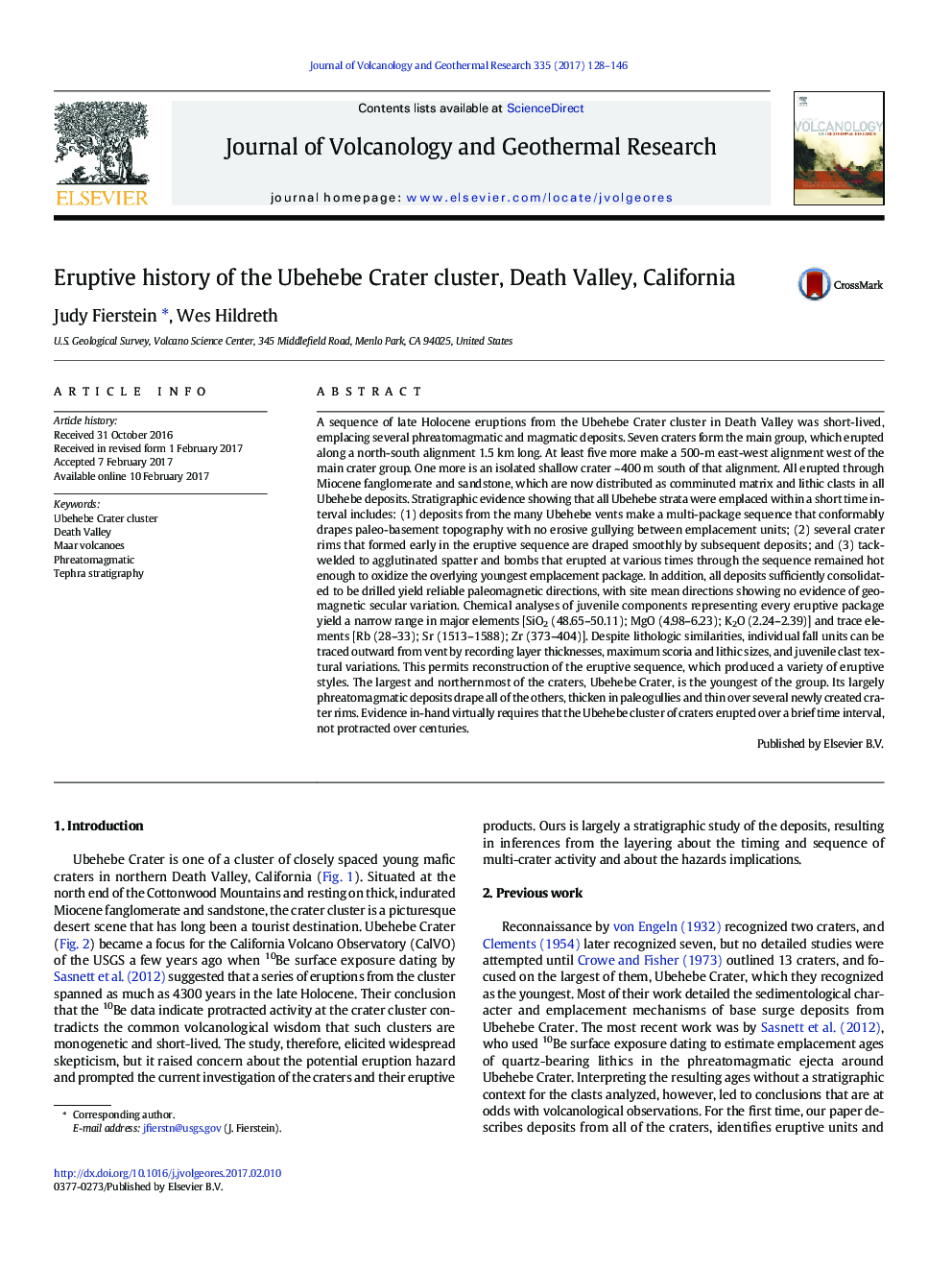| Article ID | Journal | Published Year | Pages | File Type |
|---|---|---|---|---|
| 5783932 | Journal of Volcanology and Geothermal Research | 2017 | 19 Pages |
â¢As many as 14 arcuate to circular depressions make up the Ubehebe Crater cluster.â¢Stratigraphy establishes timing and sequence of multi-crater deposits at Ubehebe.â¢10Be surface exposure dating at Ubehebe contradicts common volcanological wisdom.â¢Vent alignment, composition, + paleomagnetics reflect dike emplacement.â¢Late-Holocene eruptions from the Ubehebe Crater cluster were short-lived, probably weeks to months.
A sequence of late Holocene eruptions from the Ubehebe Crater cluster in Death Valley was short-lived, emplacing several phreatomagmatic and magmatic deposits. Seven craters form the main group, which erupted along a north-south alignment 1.5Â km long. At least five more make a 500-m east-west alignment west of the main crater group. One more is an isolated shallow crater ~Â 400Â m south of that alignment. All erupted through Miocene fanglomerate and sandstone, which are now distributed as comminuted matrix and lithic clasts in all Ubehebe deposits. Stratigraphic evidence showing that all Ubehebe strata were emplaced within a short time interval includes: (1) deposits from the many Ubehebe vents make a multi-package sequence that conformably drapes paleo-basement topography with no erosive gullying between emplacement units; (2) several crater rims that formed early in the eruptive sequence are draped smoothly by subsequent deposits; and (3) tack-welded to agglutinated spatter and bombs that erupted at various times through the sequence remained hot enough to oxidize the overlying youngest emplacement package. In addition, all deposits sufficiently consolidated to be drilled yield reliable paleomagnetic directions, with site mean directions showing no evidence of geomagnetic secular variation. Chemical analyses of juvenile components representing every eruptive package yield a narrow range in major elements [SiO2 (48.65-50.11); MgO (4.98-6.23); K2O (2.24-2.39)] and trace elements [Rb (28-33); Sr (1513-1588); Zr (373-404)]. Despite lithologic similarities, individual fall units can be traced outward from vent by recording layer thicknesses, maximum scoria and lithic sizes, and juvenile clast textural variations. This permits reconstruction of the eruptive sequence, which produced a variety of eruptive styles. The largest and northernmost of the craters, Ubehebe Crater, is the youngest of the group. Its largely phreatomagmatic deposits drape all of the others, thicken in paleogullies and thin over several newly created crater rims. Evidence in-hand virtually requires that the Ubehebe cluster of craters erupted over a brief time interval, not protracted over centuries.
